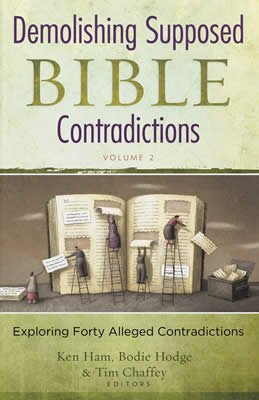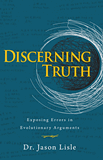
Do Rabbits Really “Chew the Cud”?
The Bible clearly states that rabbits chew their cud, but simple observation seems to show this isn’t true.
The Bible clearly states that rabbits chew their cud, but simple observation seems to show this isn’t true. Dr. Tommy Mitchell, AiG-U.S., explains this apparent contradiction.
The “Problem”
One of the most often cited “contradictions” in the Bible involves the lowly rabbit.1 Does the Bible actually indicate that rabbits “chew the cud”? And if this is what Scripture says, then isn’t it in error?
Two places in the Bible include the hare among animals that chew the cud.
Among the animals, whatever divides the hoof, having cloven hooves and chewing the cud—that you may eat. Nevertheless these you shall not eat among those that chew the cud or those that have cloven hooves: the camel, because it chews the cud but does not have cloven hooves, is unclean to you; the rock hyrax, because it chews the cud but does not have cloven hooves, is unclean to you; the hare, because it chews the cud but does not have cloven hooves, is unclean to you. (Leviticus 11:3–6)
Nevertheless, of those that chew the cud or have cloven hooves, you shall not eat, such as these: the camel, the hare, and the rock hyrax; for they chew the cud but do not have cloven hooves; they are unclean for you. (Deuteronomy 14:7)
In the modern scientific classification system, animals that chew the cud are called ruminants. Cattle, sheep, deer, and giraffes2 are ruminants. Ruminants have four stomach compartments. They swallow their food into one stomach compartment where food is partially digested. Then the food is regurgitated back into the mouth, chewed again, and then swallowed into a different stomach compartment. This process is called rumination.
So is the Bible wrong? After all, rabbits are not ruminants.3 They do not have four-compartment stomachs. How can they “chew the cud”?
The Solution
Obviously, rabbits do not share the digestive anatomy of modern ruminants. However, to describe rabbits chewing the cud is not incorrect. Simply stated, it is not reasonable to accuse a 3500-year-old document of error because it does not adhere to a modern man-made classification system.
Consider what rabbits do. They engage in an activity called cecotrophy. Rabbits normally produce two kinds of feces, the more common hard feces as well as softer fecal pellets called cecotropes. Cecotropes are small pellets of partially digested food that are passed through the animal but are then reingested. As part of the normal digestive process, some partially digested food is concentrated in the cecum where it undergoes a degree of fermentation to form these cecotropes. They are then covered in mucin and passed through the anus. The rabbit ingests the cecotropes, which serve as a very important source of nutrition for the animal.
Why would it be strange to think that centuries ago, the idea of “cud” had a somewhat broader meaning than a modern definition.
Is this the same as cud? In the final analysis, it is. Cud-chewing completes the digestion of partially digested food. Why would it be strange to think that centuries ago, the idea of “cud” had a somewhat broader meaning than a modern definition.
But does the rabbit actually chew the cud? The Hebrew word translated “chew” is the word ‘alah. With any attempt to translate one language to another, it is understood that there is often more than one meaning for a given word. A cursory glace at any Hebrew lexicon reveals that ‘alah can mean go up, ascend, climb, go up into, out of a place, depart, rise up, cause to ascend, bring up from, among others. Here it carries the implication of moving something from one place to another. So the phrase translated to English as “chew the cud” literally means something on the order of “eats that which is brought forth again.”
Also, most reference material on rabbit digestion says that the cecotrope pellet is swallowed whole and found intact in the rabbit stomach. However, experts have observed that rabbits keep the cecotrophe in the mouth for a time before swallowing.4 So even though the mucin membrane covering the cecotrope is not broken, the rabbit is able to knead it in its mouth before swallowing, possibly to enhance the process of redigestion.
Conclusion
So is the Bible in error here? No it is not. Rabbits re-ingest partially digested foods, as do modern ruminants. They just do so without the aid of multiple stomach compartments.
Demolishing Supposed Bible Contradictions: Volume 2
Footnotes
- In the modern system of classification, there are differences between hares and rabbits. However, most Biblical creationists would consider them to be a part of the same created “kind.” For the sake of this discussion, “rabbit” will include both rabbits and hares.
- By some modern classification systems, the camel, the llama, and the alpaca are actually “pseudo-ruminants” because they only have three stomach compartments.
- Although rabbits and horses are not, by definition, ruminants, they are considered “hind-gut fermenters.” Similar fermentation takes place in the “rumen” compartment of the stomach during rumination. Of course, rabbits—but not horses—add reingestion of cecotrophs to this process.
- R.M. Lockley, The Private Life of the Rabbit (Suffolk: The Boydell Press, 1964), 105.
Recommended Resources

Answers in Genesis is an apologetics ministry, dedicated to helping Christians defend their faith and proclaim the good news of Jesus Christ.
- Customer Service 800.778.3390
- Available Monday–Friday | 9 AM–5 PM ET
- © 2025 Answers in Genesis


